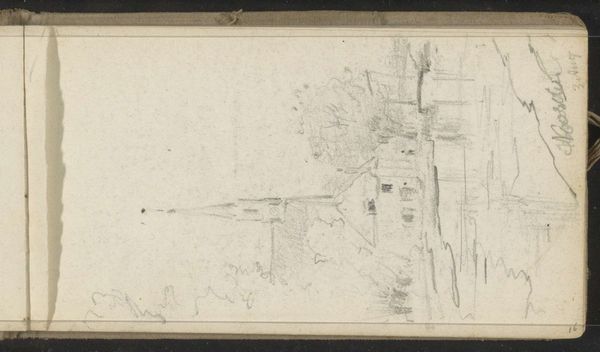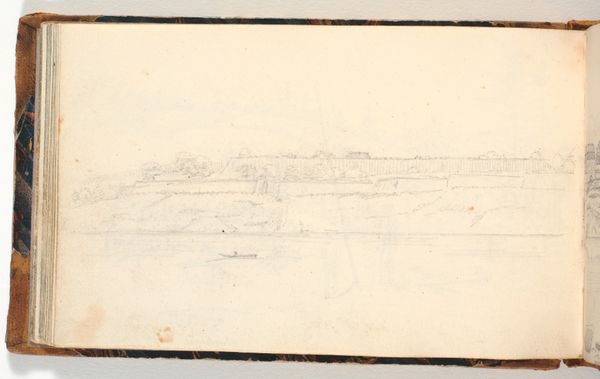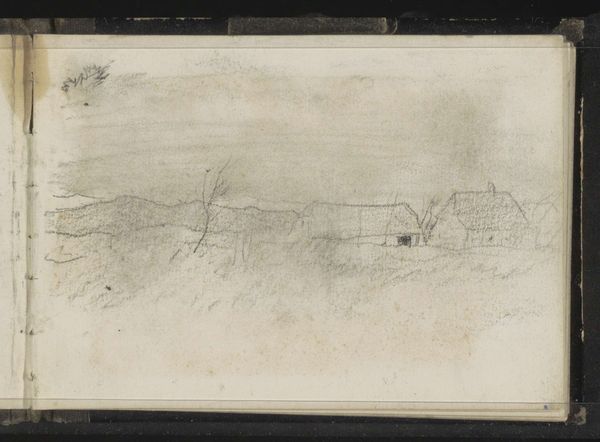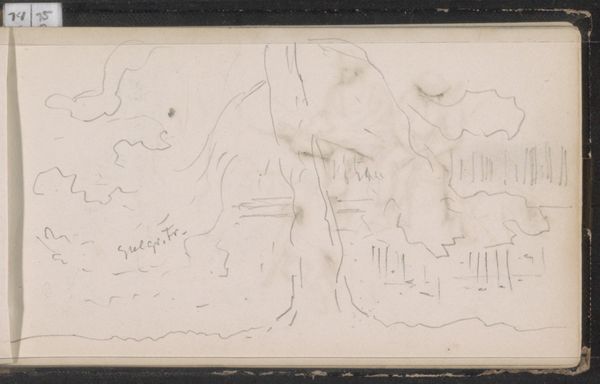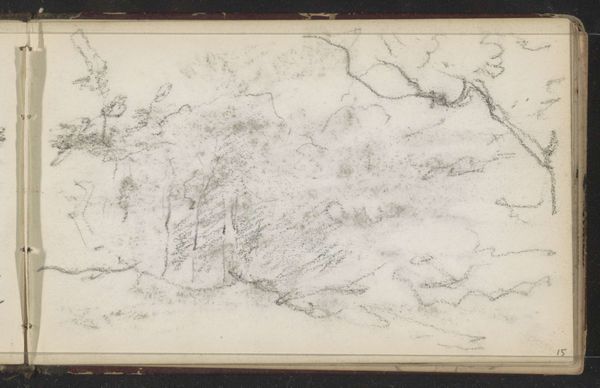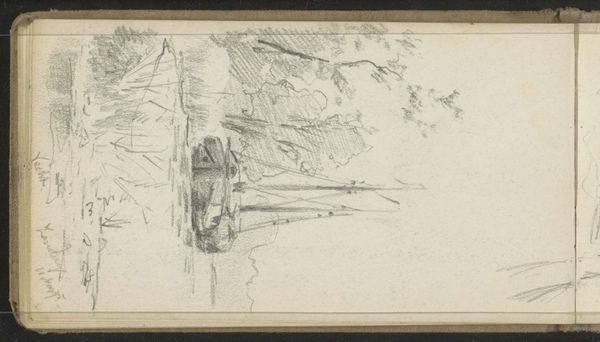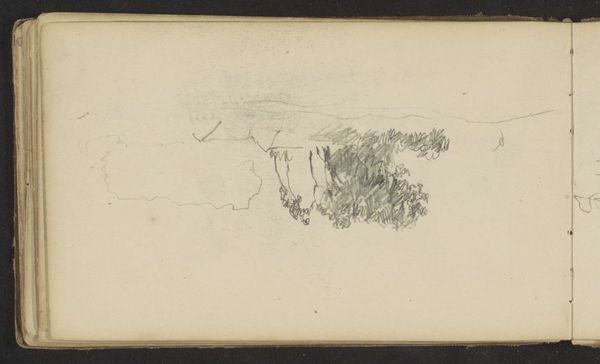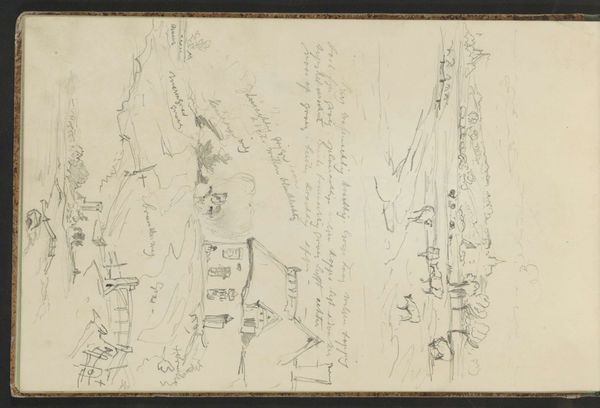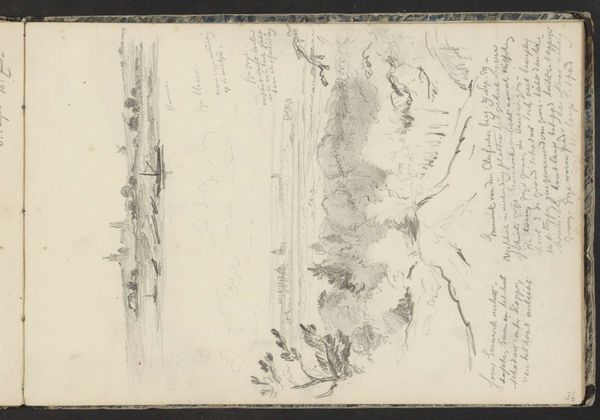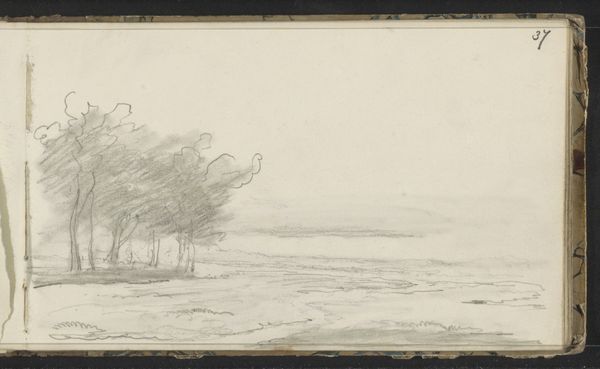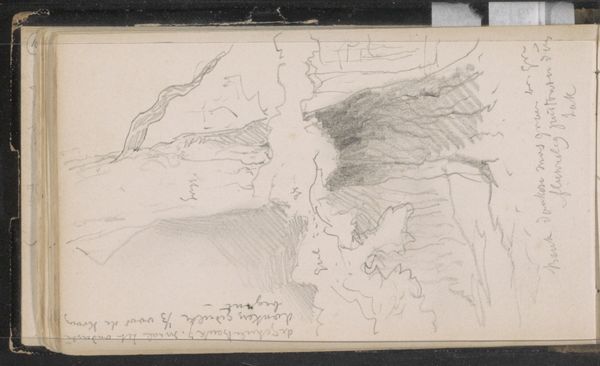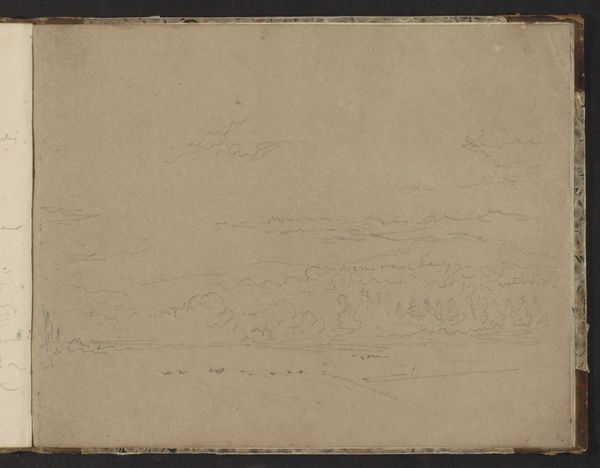
drawing, pencil
#
drawing
#
landscape
#
pencil
#
realism
Dimensions: height 95 mm, width 154 mm
Copyright: Rijks Museum: Open Domain
Curator: Before us is "Waterkant," a pencil drawing created in 1892 by Willem Cornelis Rip. Editor: There’s a sense of stillness and quietude, like looking out at a calm shoreline just before sunrise. Curator: Rip has masterfully captured light and shadow with varying densities of graphite. Look at the vertical hatching at the top, how the repeated lines help define and model the spatial field, as well as evoke textures within the image. Editor: The title "Waterkant," which translates to "Waterfront," tells only half the story, doesn't it? This isn't simply a depiction of a landscape; it's an engagement with the history of labour along waterways, of the fraught environmental politics surrounding our industrial dependence on these spaces, and even about trade and colonial pasts. Curator: Those elements are interesting for sure. Though I must disagree: for me, the realism lies primarily in how the drawing's formal arrangements communicate an essential truth. By using a narrow range of tonality, Rip constructs an image that conveys both clarity and immediacy. Editor: What truth is there, though, without some examination of context? Perhaps "Waterkant" gestures at Dutch society’s changing relationship to industrial waterways, and the human cost of canal-based shipping economies? Or we may ask what position Rip himself had within such exploitative networks. Curator: Ultimately, the artwork speaks through line and form. Editor: Precisely, which may be put toward greater discursive ends. To be sure, the success of this work exists because we can interpret the content through form. In viewing art such as this, we see our shared experience, and recognize a need to reframe it towards our decolonial future.
Comments
No comments
Be the first to comment and join the conversation on the ultimate creative platform.
